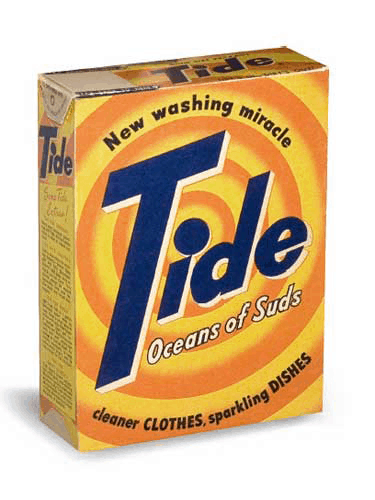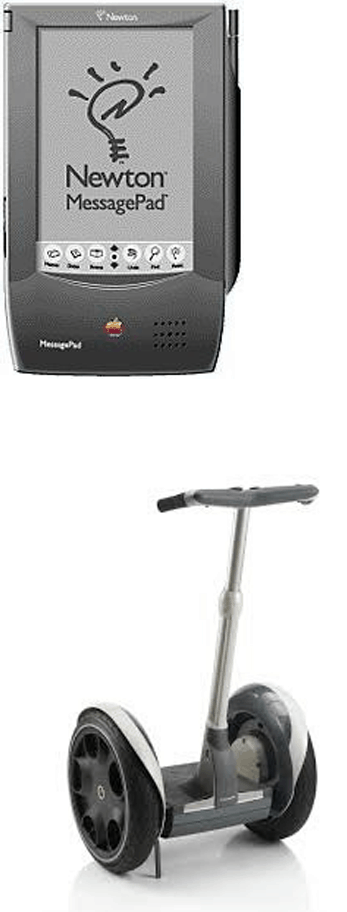Defining brand category
The first thing a prospect wants to know when encountering your brand online for the first time is, “What is it?” In its most basic sense, this question is answered with category. Leading brands tend to dominate a clear category. Think office supplies, premium coffee shops, or energy drinks and Staples, Starbucks, and Red Bull are likely to come to mind.
Like tabs in a mental Yellow Pages Directory, categories are the labels that prospects use to segment options into different buckets. For instance, for timepieces, there are clocks vs. watches. In watches, there are the categories of digital vs. analog. In analog there are a number of categories like dress watches, diving watches, chronographs, etc. Consumers tend to choose categories before they choose specific products in the category.
| CATEGORY BASICS | |
|---|---|
| Objective | Highlights what makes your offer similar to those you wish to compete with. |
| Question | Answers the prospect’s question: “What are you?” |
| Result | Gets you on your ideal prospect’s long list by associating your brand with others that satisfy the most basic requirements of the solution being sought. |
| International | Strive for one category to be identified with globally, but accept that local exceptions may have to be made. |
| Top Tip | Since it is an attempt to find your space in the target’s mental market landscape, it is important to talk with them and use their categories and not your own. |
In most, but not all cases, you will not invent a category so much as identify it. Here is the process Duffy Agency uses to define a category for our customers:
6 steps to defining your brand’s category
➊ Create a hypothesis
Brand categories are how the target market segments the options available to them to satisfy a particular want or need. This will, most likely, be very different from the way you and your team segment those options. That’s why your first step should be to define the category you believe you are competing in. This is your category hypothesis. No matter what category decided on, remember that the category chosen will create a set of expectations from prospects that your product will need to satisfy. These are called hygiene factors. Typically, these are core features and benefits that are expected for inclusion in the category. Failure to deliver on these hygiene factors will knock you out of contention pretty early in the game. For instance, if you were a watchmaker who decided to sell a certain watch as a diving watch, then, based solely on the category, people would assume the watch was waterproof to at least 100 meters, has a bezel with at least every five minutes marked to time the dive, was readable in the dark, and was resistant to corrosion from sea water.
➋ Talk to your target
Now have your hypothesis checked against your target using a third-party investigator. How to define your brand? Be sure to explore:
- What words prospects use to describe your category in conversation and when searching online.
- Determine if they consider other categories when seeking solutions.
- Check to see how other like-brands you may compete with are categorized.
➌ Confirm your findings
Some categories are very clear cut, while others are not. Be mindful that categories can differ from country to country. If interviews are conducted, there probably is a rather small sample size. The interviewer should also be able to give you a sense if they feel there was any uncertainty based on their observations. But, in any case, you should confirm the results of the interviews by other means, such as keyword research with tools like Google Adwords Keyword Planner and Google Search Trends. If there are still doubts, consider a quick online survey with Survey Monkey or offline survey at a customer or trade event.
➍ Choose your brand category type
The first decision you have to make is whether your brand will compete in an existing category or create a new one.
We said the objective of your brand’s category is to identify with existing likebrands. But, there is an alternative: Offer your target a better solution that they’ve never considered before. This is the Blue Ocean Strategy approach, where new market space is created instead of competing in existing categories. Think Henry Ford introducing the automobile to people looking for a new horse and carriage. Brands in new categories are often competing with other categories for market share. Therefore, they often advocate their category more than their product to help the category gain traction and position themselves as its leader. Henry championed the affordable automobile category because he offered a car that was half the cost of a horse and buggy.
Creating a new category in the target’s mind requires repeated exposure to your message as well as repeated exposure to third-party validation of the category. That will only happen if you have sufficient promotion budgets or an innovation that is as newsworthy as a $260 automobile was at the turn of the twentieth century and that you do the proper work to keep it in the news. If there is a significant demand for a new product, chances are your prospects have already coined a category name for it. It just needs to be found and amplified. If you feel you can’t compete well in any existing categories, then consider creating a new category in the customer’s mind where your value will shine. In either case, bear in mind that it’s not a category just because you say it is. Ultimately, consumers dictate categories, not brands. You can try to influence their categorizations, for sure, but your prospects are the ultimate arbitrators.
➎ Define your category
If your brand is not in the category where your target is looking, there is a very good chance it will be overlooked on the prospect’s path to purchase. Be sure to use the vocabulary your target uses even if it is not exactly in the words you
would choose. This is typically a very factual definition only a few words long, such as “analog diving watch.” It is not meant to communicate what makes your brand better, just what type of product it is. Your category statement is all about highlighting what makes you the same as other brands, not what makes you different or better. You will be able to use your value proposition and position to differentiate within your category.

Former Manhattan Lifestyle Concierge now successful Real Estate Broker, Meg Harvey
Don’t use your category to differentiate
Resist the temptation to get too creative with your category. A real estate broker in New York specializes in helping Europeans find homes in Manhattan. Her clients often buy their homes sightunseen, relying on her to find the right match. She realized that, in her role, she must get to know her client’s lifestyle much better than brokers dealing with local clientele. She decided to use her category to communicate this difference. She stopped referring to herself as a “real estate broker” and instead categorized herself as a “lifestyle concierge.” She changed her site’s messaging, content, and SEO to communicate her new category. The phrase was an accurate description of what she did, but unfortunately the phrase is not used by her prospects and lacked the gargantuan marketing budget it would have taken to change that. The result was a sharp drop in web traffic, a spike in bounce rate, and a lot of screwy looks during introductions before she changed her category back to real estate broker.
➏ Communicate your category
No visitor to your brand’s website should have to guess what category you compete in. When defining a brand, you should make sure that your main landing pages are optimized with your category name so they will be easily found by search engines. And, when a visitor arrives at your site, it should provide the proper cues that prospects use to identify your category or simply state your category explicitly. This has a lot to do with how you profile your brand which is covered in chapter five.
Category in action

- Tide Detergent
A classic example of creating a new category is Tide. In 1946, Proctor & Gamble was faced with the challenge of introducing a new washing powder into a category that was already saturated with a number of well-established soap brands such as Ivory, Oxydol and Rinso. Tide is not made from fats and lye like traditional soaps. It is manufactured synthetically. Instead of competing with these soaps, P&G established Tide in a new category for synthetic soaps called “Detergent.” Today Detergent is the #1-selling category of washing powder and Tide has been the #1-selling detergent since 1946.

- Newton & Segway
Failure to establish a brand in a clear category (whether established or new) can send even the strongest products into obscurity. Consider the Segway or Apple’s Newton. These brands entered the market with great products and extraordinary awareness advantage, yet failed to gain consumer interest because they lacked a focused category strategy. The Newton was categorized as a “message pad,” the Segway as a human transporter. What’s a message pad or human transporter? We can see what the products do, but without a category to place them in, it is unclear exactly what problems they were designed to address and how they fit into our lives. This leads to consumer disinterest and marketing failure.

- Walking Poles
A European manufacturer of walking poles introduced them in America. They chose the category of “alpine equipment” (alongside ice picks, backpacks, and tents) because that is how customers in Europe (mostly living in and around the Alps) categorized them. However, the US target market was middle-aged women living in the suburbs. They were looking for walking poles in the “personal fitness” category (alongside pilates balls and yoga mats). This mis-positioning created an opportunity for a new maker of walking poles to introduce their poles in the fitness category and swiftly surpass the competing brand even though they were three years late to market.
Check list
- Have you verified your category assumptions with your target market?
- Is your brand category defined in the language most commonly used by your target?
- Is your category name the phrase most commonly used by prospects in search engines?
- Have you used keyword research and trend tools to verify how the category name compares in search?
- Does your category help the prospect understand what other brands you are comparable to?
- Does your product have all the features and benefits implied by the category name?
- Can you attain a leadership position in this category among your target market?
- If you are creating a new category, do you have a strategy as well as the time and budgets required to establish it?
- Is you category immediately evident to visitors to your website and other online assets used for customer acquisition?




